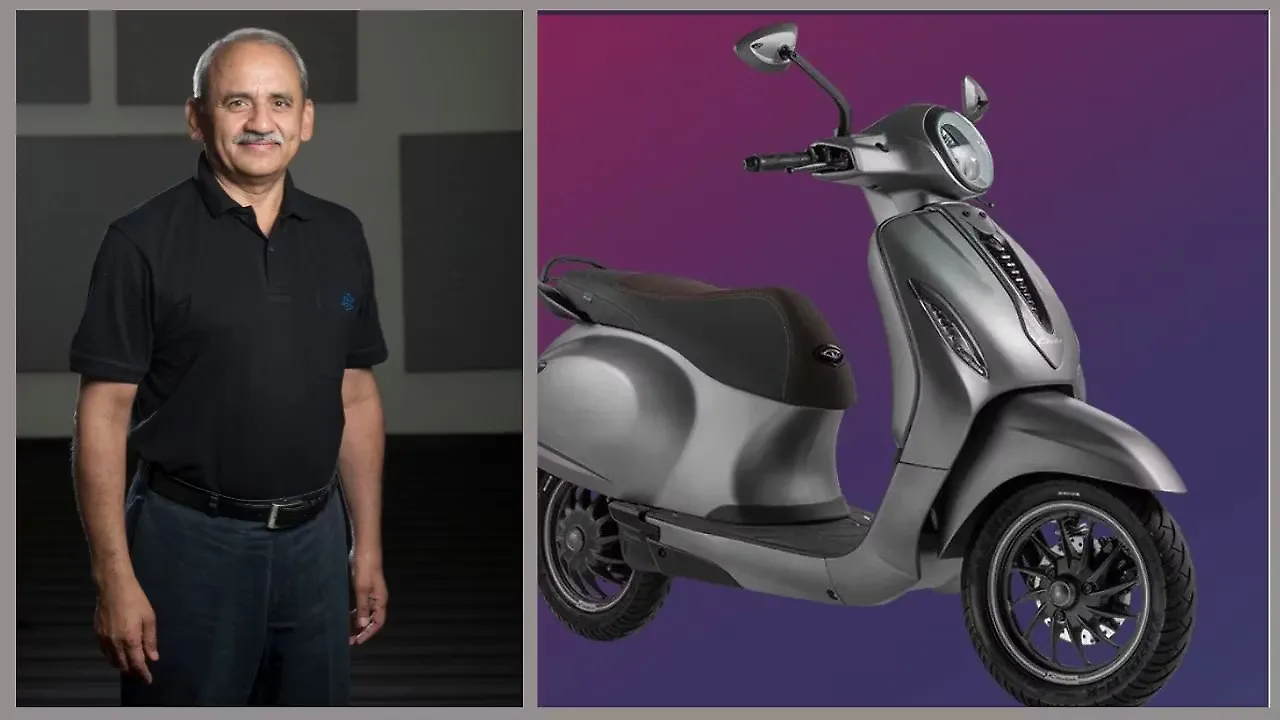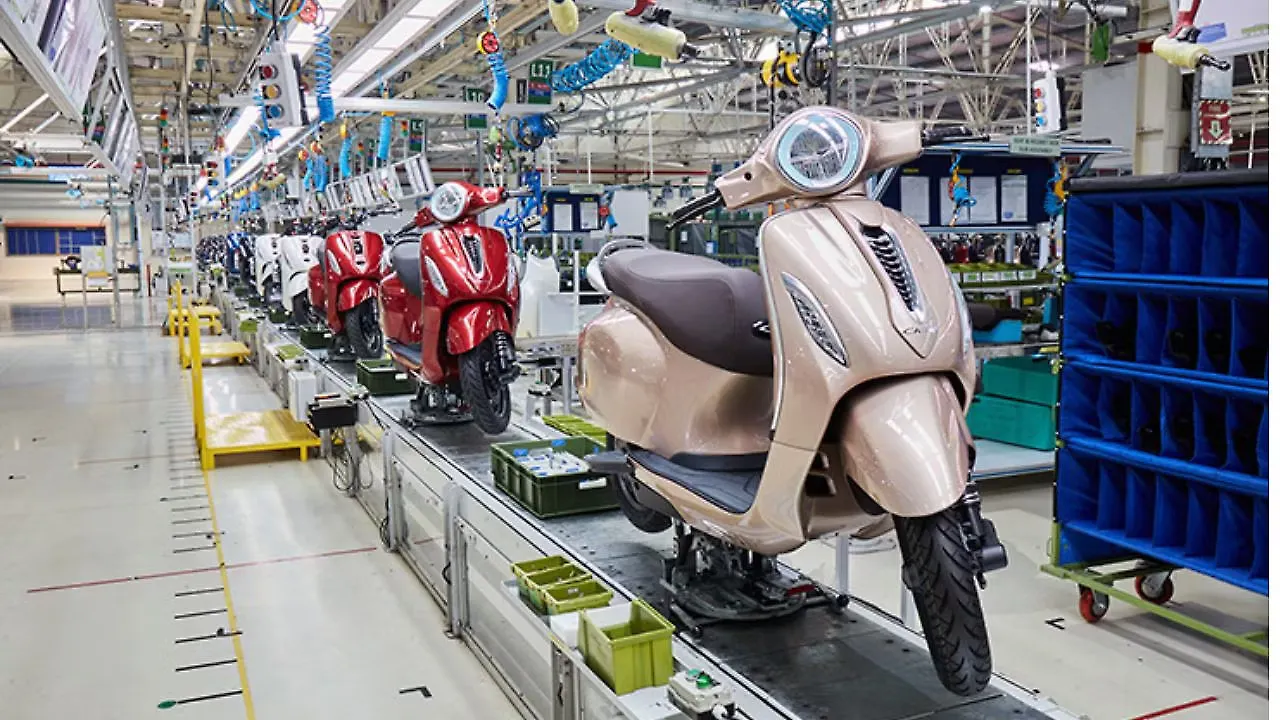
Rakesh Sharma, Executive Director, Bajaj Auto, is categorical about the fact that companies will have to live with the reality of unpredictable times in today’s era of extreme volatility.
“The business world is much more volatile than what it was a few years ago for reasons of geopolitics, changes in electric vehicle regulations and other multiple forces at work which are causing uncertainty. This will be a feature of the industry and we have to live with it,” he told Mobility Outlook in a recent telephone interview.
Bajaj Auto has been facing headwinds in recent times on exports, especially in critical markets like Nigeria, which are dealing with their own set of domestic problems. For a company, whose overseas shipments account for over 45% of production, this is a big challenge but Sharma maintained that there was really no point pressing the panic button.
“The international business for two-wheelers is in the emerging markets of the world which by definition are not as stable as developed markets. They go through upheavals and one needs to have the appetite for volatility,” he explained. The most important thing for global manufacturers was to be ready to react to these changes calmly and in an appropriate manner.
Watching The Signals
Sometimes, companies do not see these dark clouds emerging or even choose to ignore them inadvertently since they are driven by a different set of beliefs. “It is important to be alert to these signals and be agile all the time,” said Sharma. This is because the movement in demand can be pretty sharp and cause problems in terms of building excess stocks when there are fewer takers overseas.
Anticipating these upheavals, instead, can help companies scale down output and then wait for the resurgence to happen in subsequent months. “As a manufacturer, you cannot fight macroeconomics but you need to recognise the reality and plan accordingly. We have seen these cycles and the pendulum will begin swinging the other way eventually,” said Sharma.
Bajaj Auto, he added, has been an active global player for many years now and one of the key takeaways is that “you need to have the appetite to deal with this volatility in emerging markets”.
Sure, these are not the easiest of times to deal with since loss of business can percolate down to the supply chain comprising vendors, especially the smaller Tier-2 categories, who need to be extra vigilant about their working capital requirements.
Sharma reiterated that the current export headwinds were temporary setbacks and the key was to wait for the turnaround to happen. During any downturn, he added, there was really no point for companies to do anything reckless that would put them under pressure.

Demand Drivers In Place
“The other side of the coin is that markets go up and people will benefit too,” he said. The reasoning is that the fundamental drivers of demand are in place in these emerging markets like Africa and Latin America. Many of them do not have great public transport services and there is, therefore, a greater need for independent mobility solutions like motorcycles and scooters.
Roads are improving too in these countries which, in turn, ends up fuelling demand for independent transport. Right now, some important export markets for Bajaj Auto are prioritising conservation of foreign exchange due to the uncertain macroeconomic environment. “I am hopeful about things changing in the next few months,” said Sharma.
Back home in India, the company is more hopeful about demand coming back strongly in the domestic market. “I am optimistic because the last few months have seen demand, which was in the negative zone each quarter, finally moving up into the positive territory,” he explained.
This is clearly on the back of the current economic recovery cycle which is finally seeping down into two-wheeler buyers’ pockets. Helping the cause further is stronger penetration of retail financing, improvement in the rural economy, higher confidence levels with COVID now on the wane and more savings being built up as a result.
“This is leading to a single digit fundamental growth in demand,” said Sharma. According to him, a deeper dive would show a composition of two halves: the bottom layer, which is the 100 cc and the entry-level commuting motorcycle is “just about even-steven”. However, the top half, which is the 125 cc plus motorcycle category, is showing double digit growth.
Segment Dynamics At Play
“When you put the two halves together, it is 4-5% but the top half is much more than the bottom half. This is the story that has been building up which explains why the 125 cc plus segment, which was 45% in FY20, is now 50% of the pie,” elaborated Sharma.
Assuming that there are no economic jolts happening in the coming weeks and months, Bajaj Auto is confident that this will mean being “in the positive behaviour' zone as far as demand is concerned. Contrary to common perception that this is being solely driven by city commuters, he pointed out that there are 125 cc buyers in rural and urban India as much as there are 100 cc buyers in both regions.
“The 100cc buyer demand is muted in recovery, especially at the entry-level, since the economic recovery has not percolated down to the very last level,” he said. From the company’s point of view, it has a higher stake in the upper half of 125 cc plus though “this does not mean that we are ignoring the bottom half…but we are doing this on our own terms because the scope for differentiation is not very big”.
In the upper half, “we play more to our strengths of product, performance and differentiation”. As Sharma said, there was far more scope in the top half because the customer in this space is more sensitive to design and performance and rewards the manufacturer for better products.
Pure Economics
The top half has also been hit by price hikes but the ability of the buyer to absorb these shocks is slightly better than the bottom half. “It is the pure economics of it and a person’s savings have been eroded because of extraordinary medical expenses during COVID and these people have been badly hit,” he added. This buying segment is coming back slower than the salaried class, employed category, etc and hopefully, things would look up for them soon.
As Bajaj Auto gears up to enter the new fiscal, Sharma said the top priorities would be to expand the product portfolio and give customers a better choice while upgrading them in the segments it was operating in.
“This is the way to improve our market share and the goal is to ensure the best-in-class profitability even in these volatile times. Differentiated product-led growth will be the key going forward,” he added.
The EV business in both two- and three-wheelers will also be scaled up, which means the Chetak will now expand across more cities and numbers will hopefully increase consequently. Beyond this, the company plans to keep a careful eye on international markets and “grab a share of the recovery” when things begin improving towards the second half of FY24.
Also Read: